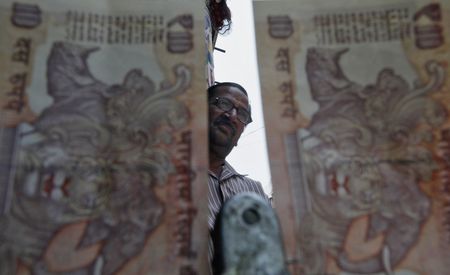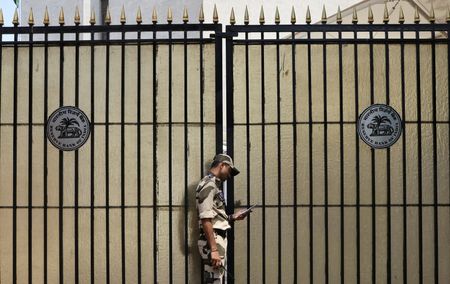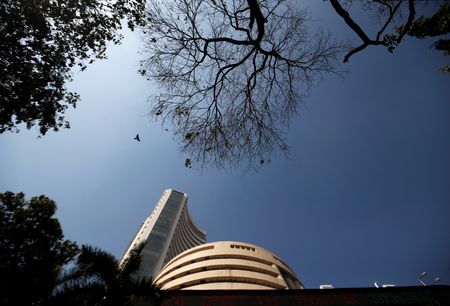By Jaspreet Kalra
MUMBAI (Reuters) – The Indian rupee weakened on Thursday as dollar demand from importers, including oil companies, outweighed the impact of a pullback in U.S. bond yields after lower-than-expected inflation renewed hopes of U.S. rate cuts.
The rupee declined to 86.4850 against the U.S. dollar as of 11:00 a.m. IST, down 0.1% on the day.
Likely portfolio inflows helped the currency post its best single-session gain in over seven months on Wednesday, after it hit an all-time low of 86.6475 in the previous session.
The dollar index was hovering around the 109-handle after data showed that core U.S. consumer prices rose less than expected in December, fanning hopes that the Federal Reserve will be able to cut interest rates this year.
Investors are now pricing in nearly 38 basis points of Fed rate cuts in 2025, against 31 bps before the inflation data.
“The (inflation) trend remains too hot for comfort and the Fed is likely to extend its well telegraphed pause in rate cuts beyond March,” ING Bank said in an note.
The bank expects the Fed to deliver a total 75 bps of rate cuts over 2025.
The inauguration of U.S. President-elect Donald Trump on Jan. 20 and central bank policy decisions lined up globally are “expected to heighten market volatility”, said Amit Pabari, managing director at FX advisory firm CR Forex.
Trump’s inauguration is likely to herald a more volatile period for markets. Measures related to trade tariffs will be in focus with China’s yuan, a closely tracked peer of the rupee, at risk.
China’s top leaders and policymakers have considered allowing the yuan to weaken in 2025 as they brace for higher U.S. tariffs, Reuters reported in December.
(Reporting by Jaspreet Kalra; Editing by Mrigank Dhaniwala)










